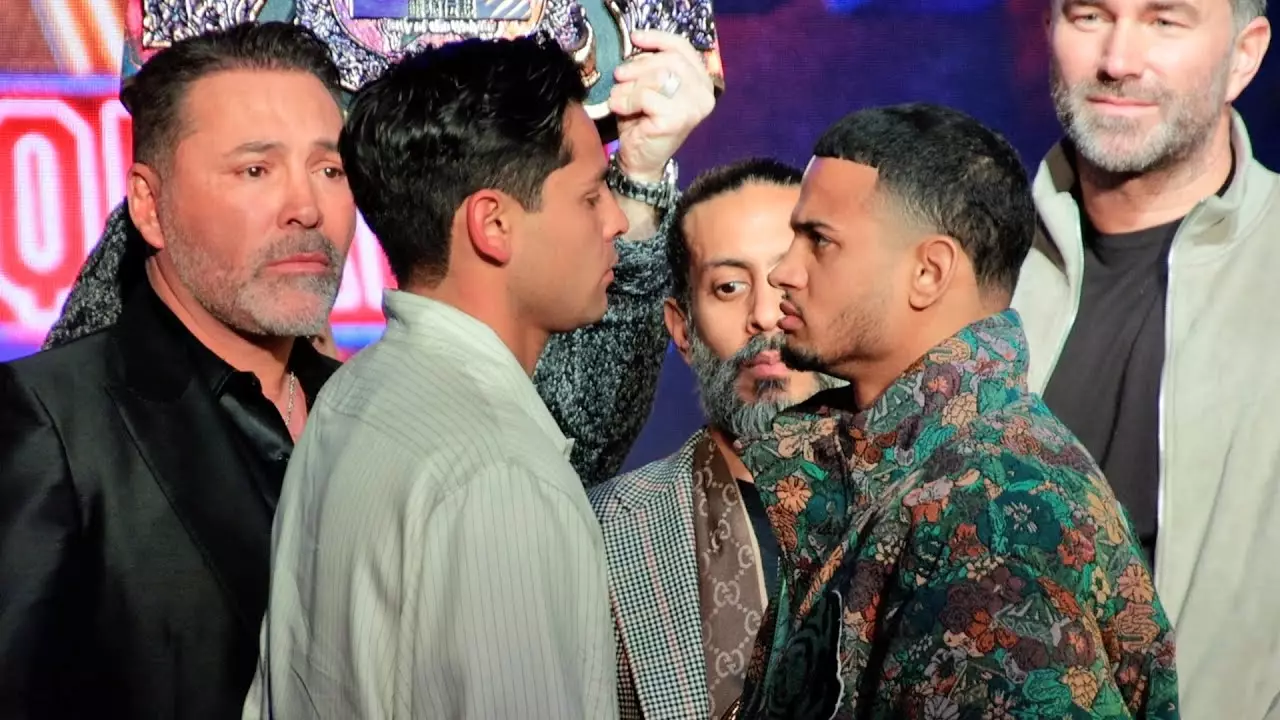In a landscape where professional boxing often blurs the lines between sport and spectacle, Ryan Garcia’s announcement of a jaw-dropping $20 million paycheck for his May 2nd showdown against Rolando ‘Rolly’ Romero has stolen headlines. This astonishing figure is especially significant as many consider this bout a mere stepping stone for Garcia to prepare for a more high-stakes rematch against Devin Haney. Holding an impressive record of 24 wins and just one loss, including 20 knockouts, Garcia is undoubtedly on the rise. However, is this payment reflective of his current standing as a boxer or indicative of a larger trend where colossal paydays overshadow competitive integrity?
Garcia’s upcoming fight is positioned within the Fatal Fury event, set in the bustling heart of Times Square, New York City—a choice of venue that amplifies the spectacle. This is not just a fight; it is an event crafted for public consumption, driven by marketability rather than raw competition. Compounding this dynamic is the $20 million question of whether Garcia and his fellow fighters, particularly Haney, need to secure a win on the same night for their October rematch to still occur. The ambiguity surrounding this requirement can alleviate pressure off Garcia, allowing him the freedom to approach the fight against Romero with less anxiety about implications for his career trajectory.
Turki Alalshikh: The Catalyst for Change
Recently, Garcia lauded Turki Alalshikh, claiming he’s the mastermind orchestrating pivotal matchups in the boxing world—including the prospective clash with Haney. Alalshikh has become synonymous with high-profile agreements and substantial financial endorsements, attracting renowned fighters by promising lucrative deals. Garcia’s enthusiasm for continuing to collaborate with Alalshikh throughout his career speaks volumes about the evolution of boxing dynamics in the modern era. The sport seems increasingly guided by business acumen over traditional rivalries, where management and matchmaking play roles akin to star power and public appeal.
Interestingly, many observers have reacted skeptically to such high earnings for a ‘tune-up’ fight. While Garcia’s talent warrants considerable investment, the question remains—how does this prospect affect the fight’s integrity? Are fighters incentivized to take less serious bouts simply for the monetary compensation, risking their reputations and competitive spirit in the process? It’s a contemplation worth entertaining as we witness the evolution of boxing contracts, sponsorship, and event production.
The Unpredictable Landscape of Boxing
On the flip side of Garcia’s lucrative payout is his co-fighter, Devin Haney, preparing to face a formidable opponent in Jose Ramirez—known for his resilience and skill. The financial disparity between the fighters raises eyebrows, particularly when considering Haney’s match performance. While Garcia’s anticipated revenue from this event shines brightly, it questions the equilibrium within the sport. Will his lucrative bout translate to victories in the ring or merely reflect an entertainment gala? The pre-fight discourse is already rife with speculation regarding potential outcomes based on the quality of opponents each fighter faces.
Both Garcia and Haney operate in an environment dictated more by marketability than merit—case in point being Rolly Romero’s spot in this card despite his slightly underwhelming recent performance. Garcia’s alignment with brands and characters capable of amplifying his persona mirrors broader trends across the boxing circuit, where narratives often outweigh actual forms of competition. In its essence, boxing today seems tangled in a complicated web of entertainment, spectacle, and significant financial exchanges.
Redefining Success in Professional Boxing
What does this mean for the future of boxing? As financial figures continue to climb, it seems possible that we might witness more ‘money fights,’ overshadowing the traditional ethos that once underscored the sport. The argument could be made that these changes might, in some cases, elevate the sport’s viewership of boxing, but at what cost to the fighters’ integrity and the essence of sport as competition? Garcia’s enthusiastic praise for Alalshikh only highlights this evolving paradigm—one where business takes precedence over straightforward rivalries.
As boxing continues to evolve, it’s evident that fan engagement will rely heavily on the stories told around these fighters and the financial underpinnings that fuel them. In the end, how this will shape the identity of boxing moving forward remains uncertain but undeniably intriguing, leading to a contemplative dialogue on the implications behind that record-breaking paycheck.


Leave a Reply